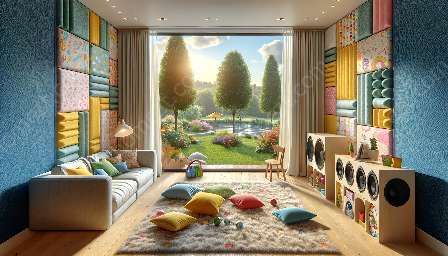Noise can be a significant source of stress for teens, affecting their sleep, concentration, and overall well-being. Implementing effective noise reduction techniques in teens' rooms can create a calm and peaceful environment that fosters relaxation and productivity. In this guide, we will explore various strategies and solutions for reducing noise and creating a serene living space for teenagers.
Noise Control Strategies for Children’s and Teens' Rooms
When designing a noise-free environment for teens, it's essential to consider the specific needs and preferences of this age group. Some effective noise control strategies for children’s and teens' rooms include:
- Soundproofing Walls: Installing sound-absorbing materials such as acoustic panels or foam insulation can significantly reduce the transmission of noise from outside the room or from other parts of the house.
- Using Heavy Curtains: Thick, heavy curtains can act as a barrier to external noise and help create a quieter atmosphere inside the room.
- Adding Area Rugs: Placing soft, thick rugs on the floor can absorb impact noise and minimize sound transmission between floors.
- Strategic Furniture Placement: Rearranging furniture to create barriers and absorb sound can help reduce noise levels in the room.
- White Noise Machines: These devices can mask disruptive sounds and create a soothing background noise to promote relaxation and improve sleep quality.
Noise Control in Homes
Effective noise control in homes goes beyond individual rooms and involves comprehensive strategies to minimize overall noise levels within the living space. Some general noise control techniques for homes include:
- Sealing Gaps and Cracks: Ensuring that windows, doors, and other openings are properly sealed can prevent the intrusion of external noise.
- Upgrading Windows and Doors: Installing double-glazed windows and solid-core doors can provide better insulation against noise pollution.
- Implementing Soundproofing Materials: Using soundproofing materials such as acoustic panels, soundproof drywall, and ceiling treatments can help reduce noise transmission and reverberation within the home.
- Creating Sound Barriers: Installing soundproof partitions, bookshelves, or heavy drapes can help create zones of quiet within the home.
- Installing Mechanical Noise Control Devices: Devices such as sound-attenuating HVAC systems and quiet appliances can contribute to an overall quieter home environment.
By implementing these noise reduction techniques and strategies, teens can enjoy a peaceful and conducive living space that supports their emotional well-being and academic performance.


